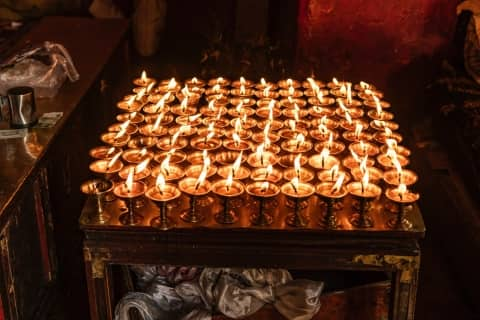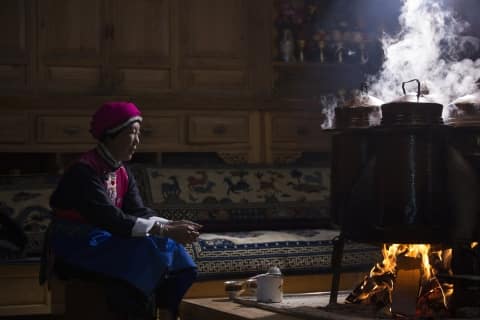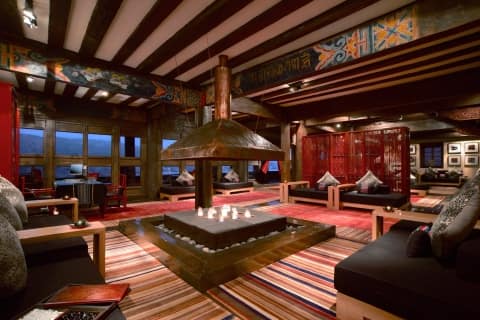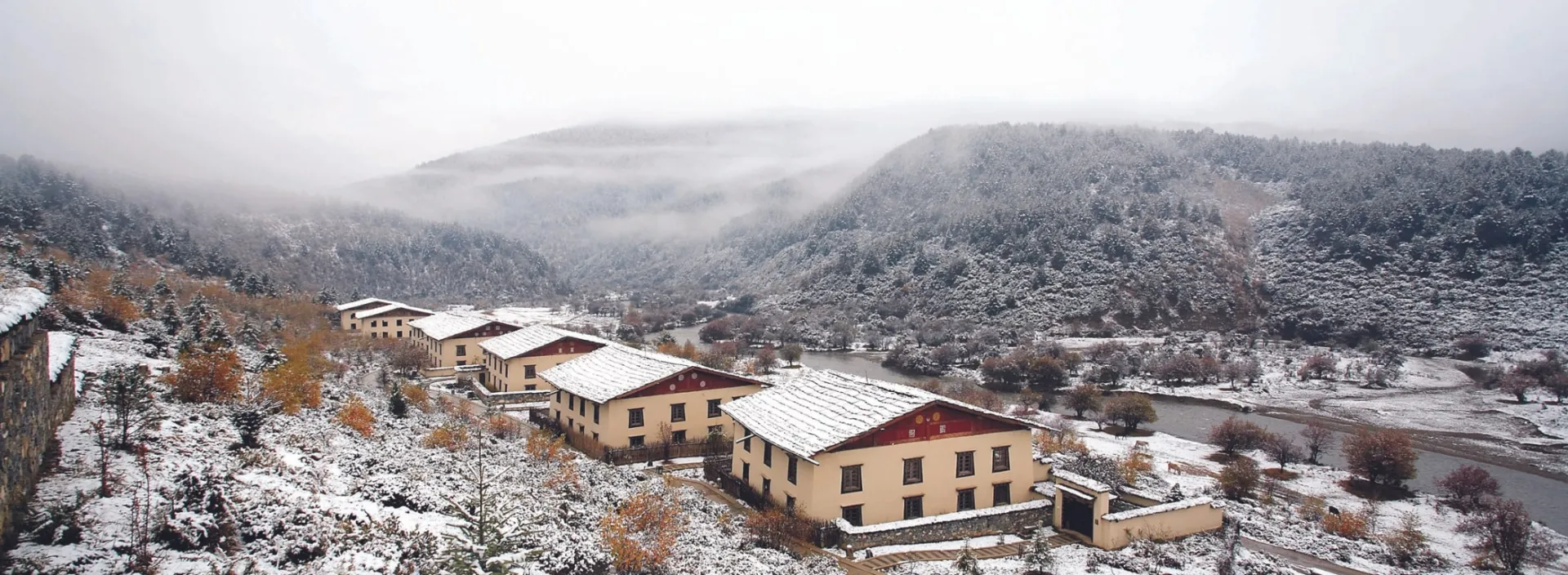OVERVIEW
Explore the unique way of life in the enchanting Tibetan village of Hang Po nestled in the majestic Himalayas, where yak butter lamps, wooden farmhouses, and cherished arts such as embroidery offer a harmonious tapestry of tradition, beauty, and spirituality.
- 29/08/2024
- 8 minutes
The term "Shangri-La," derived from Tibetan, roughly translates to "the sun and the moon in one's heart" and embodies the idea of a fictional place that transcends the boundaries between heaven and earth.
Nestled amidst the majestic Himalayas, the Tibetan village of Hang Po captures the essence of this mythical realm of Shangri-La, blending Chinese, Nepalese, and Indian influences with the characteristics of its remote Himalayan setting into a unique way of life.
Flowing through the heart of the region is the Shu-Dugang River, aptly named "cheese rock" by a monk who was served firm cheese by a local herdsman centuries ago.

Butter lamps and spirituality
Hang Po culture is shaped by Buddhism, the alignment of the stars, and the region’s untouched natural surroundings. Ancient traditions such as yak farming and high-altitude barley cultivation are integral to their daily routines, with activities like churning yak butter and brewing barley beer woven into the fabric of their existence.

A distinctive feature of the Himalayan Buddhist temples, Tibetan butter lamps have a rich history dating back to the 14th century Ming Dynasty when Buddhism's early monks would burn traditional yak butter in a sacred ceremony. These lamps, adorned with Buddhist prayers, serve as beacons of enlightenment, banishing darkness, clarifying the mind, and aiding meditation. As an offering of wisdom and knowledge, they represent attaining enlightenment and inviting illumination into our spiritual and physical lives.
Behind the doors of Hang Po
Beneath the fluttering prayer flags that adorn Hang Po Village, a slower pace of life prevails among the local population. While many Tibetans reside in tent houses crafted from yak wool, Hang Po’s residents embrace traditional farmhouses. Step inside these homes, and you'll find deep wooden interiors filled with intricately carved furniture, traditional pottery, embroidered fabrics, and the fragrance of fresh incense.
In a traditional zanba-making experience, visitors can experience this slow pace of life first-hand. Zanba is one of the region’s stable foods – a barley flour dough knead together by hand from roasted barley grains.

Traditional embroidery and art
Before the advent of modern industry in the 1950s, Tibetans sustained their livelihoods through small-scale handicrafts. Among these were painted scrolls known as thang-ka and carved wooden block with prints depicting religious deities. Skilled artisans, known as lag-shes-pa, are typically well-versed in local literature and sciences, as knowledge is passed down from generation to generation to help groom the next batch of inspiring carpenters, weavers, and embroiders.

Embroidery holds a special place in Tibetan culture as one of its most treasured art forms. Each stitch is an expression of the artist's emotions and sentiments—a much cherished and heartfelt creation. Tibetan embroidery beautifully captures the vibrant landscapes, colorful nature, and the grounding beliefs and genuine character of the culture. The intricate designs, strong color contrasts, and skillful technique bring natural life forms and ethnic deities to life. Visitors can experience the soft textures and admire the remarkable craftsmanship found in these deeply spiritual creations.
This serene haven of Hang Po village offers a captivating glimpse into the Tibetan way of life, where ancient traditions, cultural influences, and spiritual practices intertwine to create a harmonious existence, and showcase a living tapestry of tradition, beauty, and devotion.

Experience the Tibetan way of life when you stay at the traditional farmhouses of Banyan Tree Ringha near Hang Po village.
